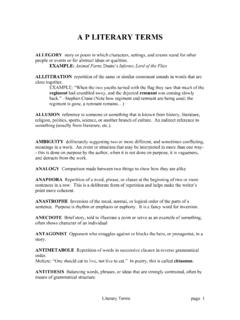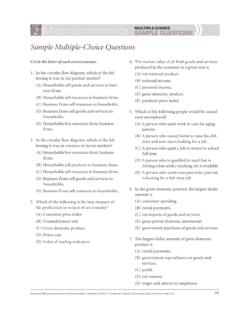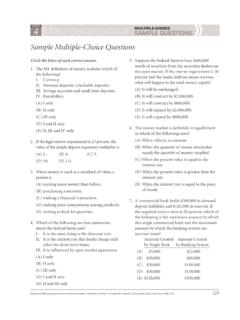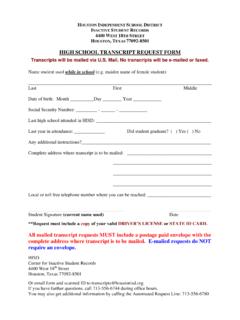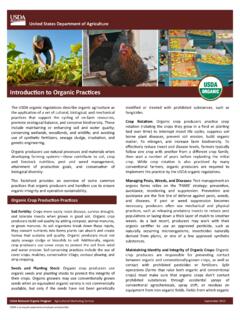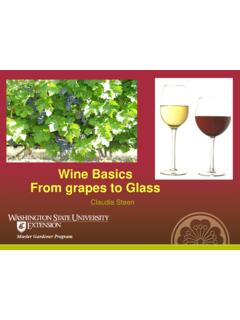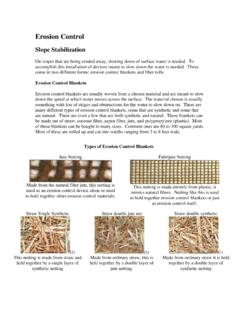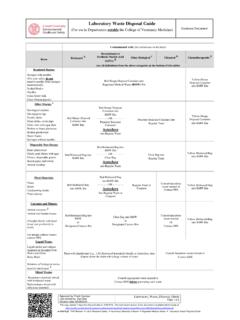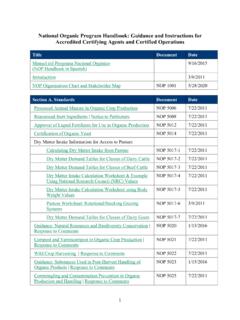Transcription of Homeostasis in Plants - Houston Independent School District
1 Homeostasis in PlantsPlant Regulation Regulation and coordination systems in Plants are much simpler than in animals Homeostatic regulation of Plants seeks to: Maintain an adequate uptake of water and nutrients form soil into leaves Control stomatal opening so that water loss is minimised and carbon dioxide is maximised When Plants respond to environmental conditions such as high temperature or salinity, they are balancing several conflicting demandsRegulation of Extracellular Fluid The composition of extracellular fluids is not precisely regulated in Plants . Plants are fairly tolerant of changes in the solute concentration of the extracellular fluid providing the solute concentration is hypotonic to the solute concentration inside their cells.
2 If the solute concentration of the extracellular fluid is hypertonic to the solute concentration of cytoplasm, water diffuses out of the cytoplasm, resulting in plasmolysis (shrinkage of the cytoplasm) and, potentially cell of Extracellular FluidGaseous Exchange In vascular Plants the rate of movement of water, carbon dioxide and oxygen between atmosphere and internal spaces is regulated by the degree of opening of Stomata are generally abundant on the surfaces of leaves, more commonly on the underside. Stomatal pores in the epidermis are bounded by two highly specialised guard Cells Guard cells have three structural features which explain their function: They are joined at their ends in pairs Their cell walls are thicker on the side nearest to the stomatal pore Bands of inelastic cellulose fibres run around each cellRegulating Stomata Stomal movement is the result of changes in the turgor of the guard cells.
3 If water flows into the guard cells by osmosis, their turgor increases and they expand. The relatively inelastic inner wall makes them bend and draw away from each other. This opens the Regulate StomataStomatal ions move into the moves into the vacuoles, following potassium guard cells stoma ions move out of the vacuole and out of the moves out of the vacuoles, following potassium guard cells shrink in stoma in Plants Communication between cells in different parts of a plant is required to coordinate the direction and timing of growth water balance other plant responses Plants have no nervous system so internal coordination is controlled by hormonesHormonal Responses Responses in Plants are simple no equivalent to endocrine system of animals.
4 Hormone-producing cells in Plants are not organised into specialized tissues such as glands. Hormones generally produced by the cells receiving the appropriate environmental stimulus. Responses are slower than in animals Hormones are distributed throughout the plant in a variety of ways: Cell to cell Through transport pathways (usually phloem) Through airDetecting Stimuli Plants don t monitor their internal environment as animals do because there is no distinct difference between their extracellular fluids and the external environment. Plants don t have specialised receptors like those in animals Stimuli causes a sensitive cell to produce a particular hormone, which then travels relatively slowly, usually through the phloem, to reach responsive tissuesDetecting StimuliStimuli to which Plants respond include:Physical factors: Direction and wavelength of light, day/night length (photoperiod), gravity, temperature, touchChemical factors: Water, carbon dioxide and specific chemicals ( ethylene gas ripens fruit) Directionality is often an important aspect in plant sensing and responses Plants respond to the physical parameters of their environment in different ways.
5 Phototropism growth in response to light Geotropism growth in response to gravity. Negative geotropism shoot grows up Positive geothropism roots grow down Thigomotropism tendency for climbing Plants to wrap themselves around a support Heliotropism tendency for some Plants to follow the sun during the course of the day Photoperiodism respond to changing day-length this is the basis for seasonal changes in Plants Vernalization respond to periods of cold When Plants grow towards a stimulus it is referred to as a positive tropism, and when Plants grow away from a stimulus it is referred to as a negative else do plant hormones control?
6 Apical dominance the inhibition of lateral branches Ripening of fruit conversion of starches to sugars Abscission shedding of leaves and fruitSummary of the properties ofplant hormonesHORMONEWHERE PRODUCEDEFFECTIVE SITEACTIONVISIBLE EFFECTA uxinsShoot tip (meristem)Growing region of shootCells elongated under turgor pressureTip bends towards lightGibberellinFruits, seeds, growing buds, elongating stemsWhole plantGrowth of cellsGrowth of plant, germination of seeds, flowering, fruit enlargementCytokininsRoots and developing fruitsBranch and leaf budsAntagonises auxins on leaf buds, promotes cell division and differentiationGrowth of lateral branchesAbscisic acidChloroplastsGene expression in nucleiGrowth inhibitionSeed dormancy, vernalisation, drought toleranceEthyleneRipening fruits and other parts of plantCellular metabolismFruit ripening, leaf dropIncreased sugar in fruit.
7 Leaf and fruit dropAuxins The Good Some auxins are used to stimulate root development in stem cuttings and induce the formation of lateral roots. Spraying auxins can: prevent natural pollination, produce seedless vegetables such as tomatoes and cucumbers prevent fruit fall by delaying abscission induce flowering in the pineapple familyAuxins The Bad Are both stimulators and inhibitors of growth. synthetic auxin-like chemicals 2,4-D and 2,4,5-T were used as herbicides. (both contain trace levels of dioxin as a contaminant) The combination of these two chemicals was refered to as Agent Orange during the Vietnam war and was used as a defoliant as it causes such rapid, disproportionate growth that leaves of treated Plants shrivelled and died.
8 At the correct concentrations these chemicals are selective for broad-leaved weeds and do not kill An example of an auxin Auxins are produced by the growing tips of Plants . Their site of production was first identified in germinating grass seeds. It was found that the first leaves (coleoptiles) of these germinating seeds did not grow if their tips were removed. IAA is responsible for apical dominance. Apical dominance exists when lateral buds on the stem close to the apex of a plant do not develop while the growing tip at the apex of a plant grows and develops. Development of the lateral buds is inhibited as a result of the action of IAA that is produced by the terminal bud at the apex of the plant.
9 The IAA moves down the stem through the phloem and exerts an inhibitory effect. When the bud at the apex is nipped off, the source of IAA is removed and lateral buds lower down on the stem begin to develop. Auxins are involved in the bending of plant shoots and roots in response to light and An example of an auxin Auxins are water soluble chemicals produced in the tip of the plant which promote elongation of the cells cause bending of Plants Auxin is evenly distributed throughout the tip and the coleoptile grows straight up. If light is concentrated to one side of a coleoptile then auxin moves away from the light source to the darker side of the tip and becomes more concentrated in the cells in that region.
10 The increased concentration of auxin in these cells means they grow more quickly than cells nearer the light. The uneven growth of cells results in bending of the cause bending of plantsGibberellins Can speed germination in spring by overcoming seed dormancy and the requirement for light. Can cause formation of giant flowers Treating seedless grapes with gibberellin produces larger juicer fruit. synthetic gibberellins may be used as herbicides by producing abnormal growth of stems without adequate root growth, or by stopping cell division. Can be used to prevent root growth in potatoes, thereby preserving the cropAbscisic Acid (ABA) Recent work indicates that abscisic acid does not have this role.
